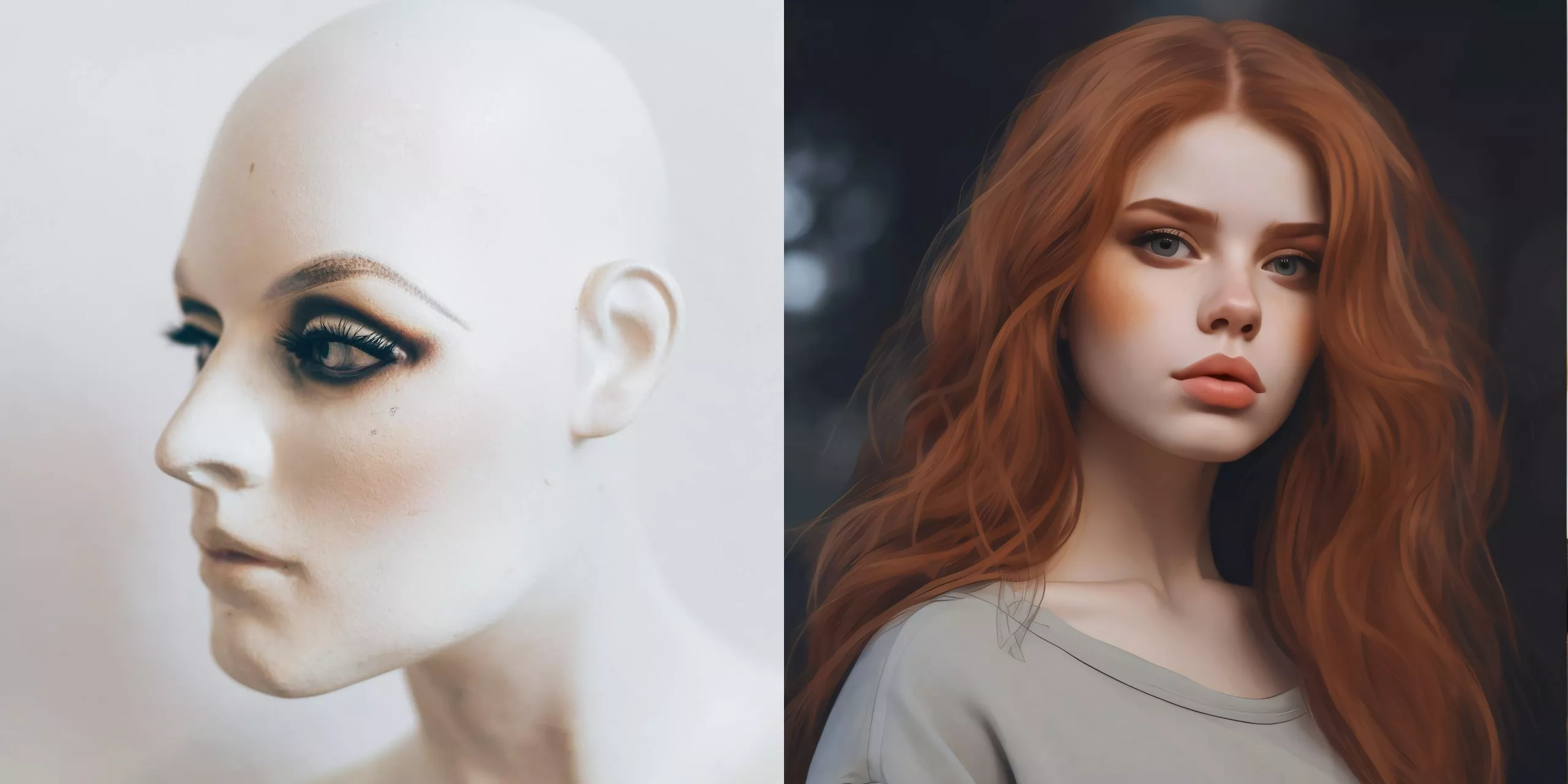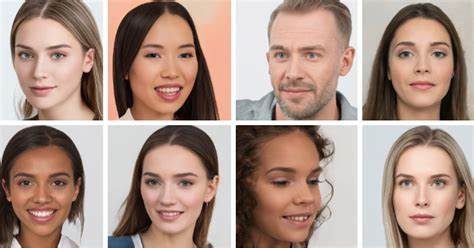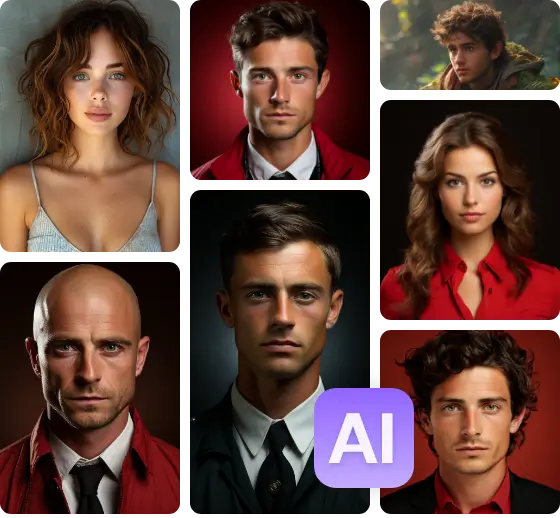The use of face generation technology has opened up a world of possibilities for artists, designers, and creators of all kinds. From character design and digital portraits to avatar creation and conceptual art, AI-generated faces serve as versatile tools for unleashing creativity and pushing the boundaries of visual expression.
In this article, we’ll explore the exciting ways in which artists and designers can harness the power of face generation technology. Whether you’re an illustrator looking to explore new avenues of character design or a graphic designer seeking fresh ideas for visual storytelling, the possibilities afforded by AI-generated faces are limited only by your imagination.

Preparation Before Using Face Generation
Face generation technology, powered by artificial intelligence, is rapidly transforming the landscape of art and design. By enabling the creation of highly realistic and diverse faces, this technology is offering artists and designers exciting new avenues for creative expression. Here’s how face generation can be harnessed to unleash creativity:
- Inspiration and exploration:
- Generate unique character concepts: Overcome artist’s block by using face generation to create unique character ideas for illustrations, concept art, and video games. Experiment with different ethnicities, age groups, and facial features to find the perfect inspiration for your project.
- Explore diverse representation: Face generation can be used to create datasets featuring individuals from underrepresented communities, allowing artists to depict a wider range of people in their work. This promotes inclusivity and fosters a more diverse and representative art world.
- Enhanced storytelling:
- Bring characters to life: Generate realistic faces for your characters, bringing them to life for storyboards, concept art, and illustrations. This can add depth and emotional resonance to your storytelling.
- Create emotional impact: Utilize face generation to create expressions that accurately convey emotions, enhancing the narrative impact of your artwork.
- Efficient design workflows:
- Save time on reference photos: Generate faces that closely resemble the specific demographics you need for your design project, eliminating the need for lengthy searches for reference photos.
- Personalize user experiences: Create diverse avatars or personalized portraits for user interfaces, marketing materials, or even product packaging, fostering a more engaging and personalized user experience.
It’s important to remember that face generation technology is a tool, and like any tool, it can be used for both positive and negative purposes. It’s crucial to use this technology responsibly, ethically, and with respect for diversity and individual privacy.

Top 3 Online Platform for Face Generation
As face generation technology continues to evolve, it holds immense potential to further democratize art creation, empower artists to explore new creative avenues, and redefine the boundaries of art and design.
Here are the top 3 online websites to use face generation for art and design:
1. Artbreeder:
Artbreeder online platform interface
- Offers a user-friendly interface with various customization options for generating unique and diverse faces.
- Allows for collaborative breeding of generated faces, enabling further exploration and refinement.
2. This Person Does Not Exist:
This Person Does Not Exist online platform interface
- Generates highly realistic portraits of people who do not actually exist, perfect for creating unique character concepts.
- Offers limited customization options but excels in generating photorealistic faces.
3. StyleGAN2:
- A powerful open-source tool for advanced users with coding experience.
- Provides extensive control over the generation process, allowing for highly customized and creative face generation.
Remember, these are just a few examples, and several other online platforms and software offer face generation capabilities. It’s essential to explore and find the tool that best suits your needs and creative vision.

A Step-by-Step Guide
Face generation technology can be a powerful tool for artists and designers. Here’s a step-by-step guide on how to use it for your creative projects, along with an image example:
- Choose a Face Generation Tool:
Several online and downloadable face generation tools are available, some free and others with paid subscriptions offering advanced features. Here are a few popular options:
- Artbreeder: https://www.artbreeder.com/(Free and paid plans)
- This Person Does Not Exist: https://this-person-does-not-exist.com/en(Free)
- StyleGAN2-ADA: https://github.com/NVlabs/stylegan2-ada-pytorch(Requires technical expertise)
- Define your desired characteristics:
Most tools allow you to specify various parameters for the face you want to generate. These may include:
- Age: Choose from young adult, middle-aged, or elderly.
- Gender: Specify male, female, or non-binary.
- Ethnicity: Select from various ethnicities or mix and match for diverse representation.
- Hair style and color: Define hair length, style, and color.
- Facial features: Adjust parameters like eye shape, nose size, and lip fullness.
- Generate and refine:
Once you’ve defined your desired characteristics, click “Generate” and the tool will produce several faces based on your specifications. You can then:
- Refine the results: Many tools allow you to adjust specific features of the generated faces to achieve the perfect look.
- Generate variations: Keep generating faces with slightly different variations until you find the one that best suits your needs.
- Export and use:
Once you’re happy with the generated face, you can export it in various image formats like JPEG or PNG for use in your project.
Image Example:
Imagine you’re creating a concept art piece for a fantasy novel featuring a young, South Asian elf with short, curly black hair and emerald green eyes. You can use a face generation tool to:
- Set the age to “Young Adult”.
- Set the ethnicity to “South Asian”.
- Choose “Female” gender.
- Select “Short, curly” hair style and “Black” hair color.
- Choose “Emerald green” for eye color.
After generating and refining, you can export the image and use it as a reference for your artwork.
Remember:
- Face generation is a tool, use it responsibly and ethically.
- Ensure you have the rights to use the generated faces commercially if needed.
- Give credit to the tool if required by its terms of service.
By following these steps and using face generation responsibly, you can unlock new creative possibilities and enhance your art and design projects.
Conclusion
Face generation technology presents a powerful and versatile tool for artists and designers. It opens doors to new avenues for creative exploration, enhances storytelling capabilities, and streamlines design workflows. However, it’s crucial to remember the ethical considerations and use this technology responsibly, fostering inclusivity and respecting individual privacy. As this technology continues to evolve, the possibilities for enriching the world of art and design are truly boundless.
